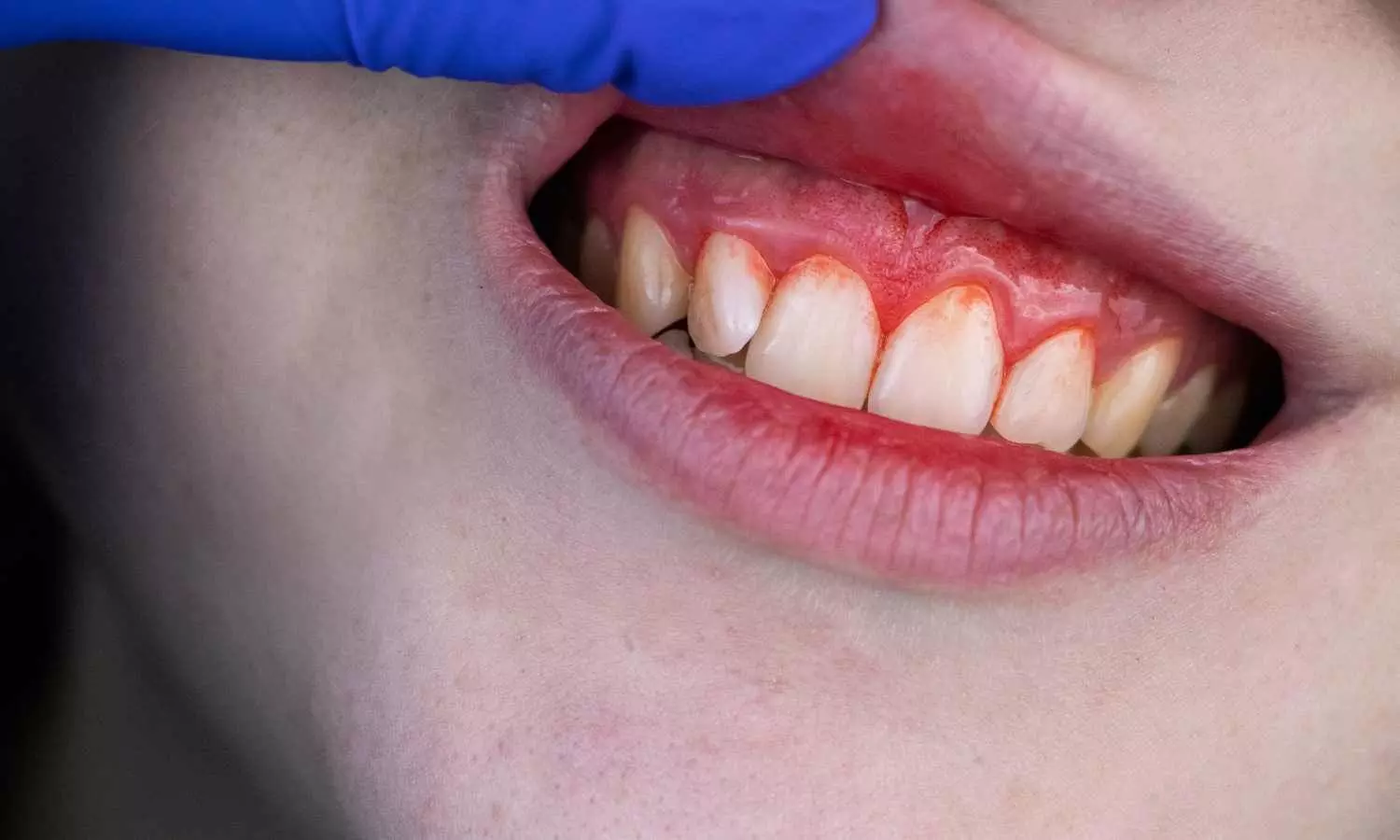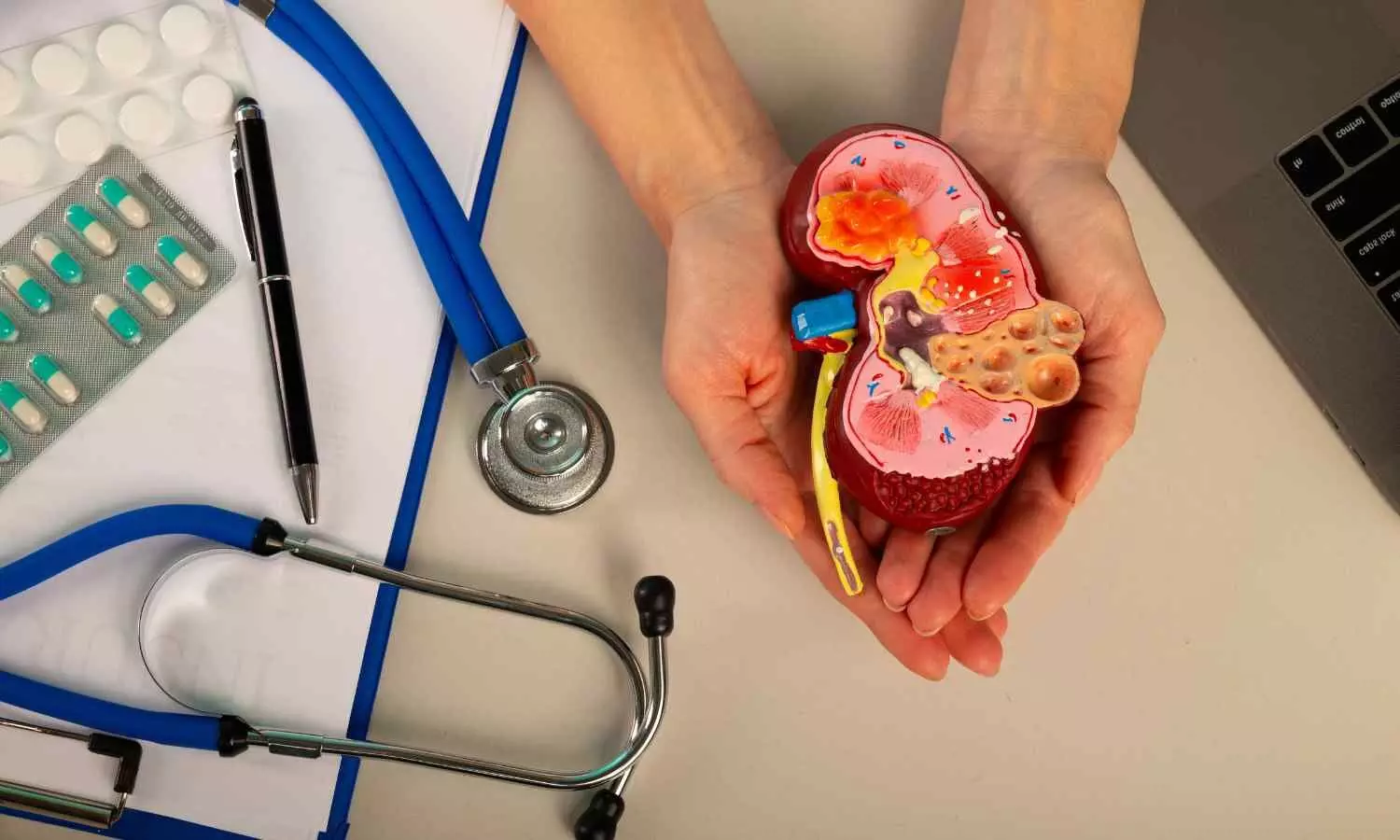Walking further and faster linked to reduced risk of cardiovascular events in people with high blood pressure
Powered by WPeMatico
Powered by WPeMatico
Powered by WPeMatico
Powered by WPeMatico
Powered by WPeMatico
Powered by WPeMatico

UK: A new study published in the Journal of the American Heart Association highlights the long-term burden of depression in stroke survivors and identifies key risk factors that contribute to its persistence and recurrence over five years. The research, led by Lu Liu, MMed, from the School of Life Course and Population Sciences at King’s College London, utilized data from the South London Stroke Register collected between 1997 and 2022.
The study examined 1,724 stroke survivors with a mean age of 65.5 years, of whom 55.9% were men and 65.2% identified as White. Depression was assessed at three months post-stroke and annually for up to five years using the Hospital Anxiety and Depression Scale. Participants with more than two depression assessments were included to evaluate long-term trajectories.
The findings revealed the following:
The study emphasizes the critical need for early screening and long-term monitoring of depression in stroke survivors. According to the authors, recognizing patterns of depression and their underlying risk factors can help tailor treatment strategies. For instance, patients with recurrent depression may benefit significantly from intensive physical rehabilitation, while those with persistent depression might respond better to targeted psychological therapies, particularly when cognitive impairment or a history of depression is present.
The researchers noted several strengths of the study, including its prospective design, large population-based sample, and repeated assessments over an extended follow-up period. However, they acknowledged certain limitations, such as the exclusion of patients with fewer than three assessments, which may have resulted in underrepresentation of individuals with more severe strokes, and the reliance on a screening tool rather than clinician-administered diagnostic interviews for depression.
Overall, the findings highlight the complex interplay between stroke severity, physical disability, cognitive function, and mental health in shaping long-term outcomes for stroke survivors. The study emphasizes the importance of integrated care approaches that address both physical and psychological needs to improve recovery and quality of life.
“Early identification and proactive management of depressive symptoms could play a key role in mitigating long-term disability and enhancing overall prognosis in this vulnerable population,” the authors concluded.
Reference:
Liu L, Marshall IJ, Bhalla A, Li X, Ayis S, Wolfe CDA, Wang Y, O’Connell MDL. Long-Term Course of Depression After Stroke and Risk Factors for Symptoms With Poor Progression: A Population-Based Study. J Am Heart Assoc. 2025 Jul 29:e041931. doi: 10.1161/JAHA.125.041931. Epub ahead of print. PMID: 40728181.
Powered by WPeMatico

Researchers identified that a single, skilled nurse could safely rule out pulmonary congestion in patients with acute kidney injury (AKI) with lung ultrasound (LUS), providing new promise for the inclusion of point-of-care imaging in nursing practice. In a prospective exploratory diagnostic accuracy study, LUS performed by a nurse had high specificity (94%) but moderate sensitivity (50%) for detecting pulmonary congestion in critically ill adults. The study was published in the International Journal of Nursing Knowledge by Bruna G. and colleagues.
The research was carried out from October 2022 to September 2023 in a Brazilian general hospital ICU. A convenience sample of 64 adult AKI patients admitted to the ICU were included. Bedside LUS was conducted by a critical care nurse according to the “Bedside Lung Ultrasound in Emergency” protocol. Pulmonary congestion was considered to be present when ≥3 B-lines in ≥2 intercostal spaces on both sides of the chest. These ultrasound results were subsequently compared to an independent reference standard of vascular congestion on chest X-ray or CT scan, interpreted by blinded intensivists.
The objective was to establish how precisely nurse-administered LUS can diagnose pulmonary congestion and whether these ultrasound results reflect nursing diagnostic models, specifically NANDA-I classification of “Excess Fluid Volume.”
Key Findings
• 14 out of 64 patients (21.9%) were detected to have pulmonary congestion by the radiological standard.
• LUS was 50% sensitive (95% CI: 23%–77%), i.e., correctly detected half of the true congestion.
• Specificity was 94% (95% CI: 89%–99%), i.e., LUS correctly excluded congestion in nearly all patients without it.
• Positive predictive value (probability that patients with positive LUS actually had congestion) was 70%, and the negative predictive value (probability that patients with negative LUS were actually congestion-free) was 87%.
• Nurse-performed LUS showed high agreement with radiology, with a Gwet’s AC1 coefficient of 0.77 (95% CI: 0.63–0.92).
• There were no reported adverse events from conducting LUS.
• The significant sonographic marker, ≥3 B-lines, correlated with NANDA-I defining characteristic of “pulmonary congestion” for the diagnosis code 00026 of Excess Fluid Volume.
In this pilot study, one experienced nurse could perform LUS with very good specificity to exclude pulmonary congestion in AKI patients admitted to intensive care units. The present results bring a new avenue for equipping nurses with point-of-care imaging, pointing out further research with greater numbers for full utilization of its diagnostic capabilities.
Reference:
Barbeiro, B. G., do Prado, P. R., Santos, V. B., Menegueti, M. G., Boling, B., & Gimenes, F. R. E. (2025). Diagnostic accuracy of nurse‑performed lung ultrasound for pulmonary congestion in acute kidney injury: An exploratory study. International Journal of Nursing Knowledge, 2047-3095.70018. https://doi.org/10.1111/2047-3095.70018
Powered by WPeMatico

A study published in BMC Oral Health suggests that women of childbearing age with gum disease may face a higher risk of developing gestational diabetes. Researchers observed a dose-dependent relationship between the severity of gum inflammation measured by clinical attachment level and the occurrence of gestational diabetes, highlighting the key role of inflammation in this association. The study was conducted by Jing Cheng and colleagues.
The study drew a large cohort of 5,283 women in the age group of 20 to 44 years, drawn from NHANES III and NHANES 2009–2014 data sets. These subjects were categorized based on their diabetes status as non-diabetes, diabetes mellitus (DM), and gestational diabetes mellitus (GDM). Periodontal status of the participants was measured by both categorical diagnosis of periodontitis as well as continuous variables such as clinical attachment level (CAL).
Multivariate logistic regression analyses were utilized to compare the associations between periodontal measures and status of diabetes. Linear regression models were applied to examine associations with hemoglobin A1c (HbA1c). Mediation analysis was also used to evaluate if inflammatory biomarkers such as white blood cell count (WBC), monocyte count, and monocyte-lymphocyte ratio (MLR) were mediators of the relationship between periodontitis and GDM.
Key Findings
• Women with periodontitis had 1.68 times the risk of having GDM as women without periodontitis (OR = 1.68, 95% CI: 1.14–2.50).
• Increased clinical attachment level (CAL) was correlated with a 50% increased risk of GDM with every 1-mm increase (OR = 1.50, 95% CI: 1.25–1.81).
• HbA1c was positively correlated with both periodontitis (Beta = 0.19, SE = 0.06, p < 0.01) and CAL (Beta = 0.06, SE = 0.03, p < 0.001).
• White blood cell count mediated 5.02%
• Monocyte count mediated 5.88%
• Monocyte-lymphocyte ratio mediated 5.20%
The research concluded that periodontitis was highly related to gestational diabetes mellitus risk among women of childbearing age. Systemic inflammation, as indicated by heightened white blood cell count, monocyte count, and monocyte-lymphocyte ratio, seemed to partially mediate this relationship. The findings are in favor of incorporating periodontal screening in prenatal care to possibly eliminate the risk of GDM through early detection and intervention of oral inflammation.
Reference:
Cheng, J., Jiang, Q., Liu, Y. et al. Mediating role of systemic inflammation on the association between periodontitis and gestational diabetes mellitus: a cross-sectional study. BMC Oral Health 25, 1179 (2025).https://doi.org/10.1186/s12903-025-06541-x
Powered by WPeMatico

Researchers at the University of Pittsburgh have identified a new way of predicting whether a kidney donor and recipient are a good match for transplantation.
The findings, published today in Science Translational Medicine, could complement existing methods to identify patients at higher risk of rejecting a new kidney and who may benefit from additional immunosuppression to reduce that risk.
“The dream of any kidney transplant surgeon is one transplant for life,” said senior author Aravind Cherukuri, M.D., Ph.D., assistant professor of medicine, surgery and immunology at Pitt, co-director of clinical research at the Thomas E. Starzl Transplantation Institute and nephrologist at UPMC. “That goal has not been achieved yet, but even small advances in prolonging the life of a transplant would be amazing because it will reduce the need for organs and the number of people on waitlists.”
Before a kidney transplant, clinicians determine whether donors and recipients are a good match by evaluating their human leukocyte antigens (HLA). According to Cherukuri, HLA is the genetic fingerprint of the transplanted organ and allows the immune system to distinguish self from non-self. When T cells recognize foreign HLA molecules on a transplanted organ, they initiate immune responses that can lead to inflammation, scarring and eventual graft failure.
“HLA matching is the main way of risk stratifying when it comes to kidney transplant,” said Cherukuri. “Even with a good HLA match, recipients must take immunosuppressant drugs for the rest of their lives to reduce the chance of rejection. However, there has been stagnation in the field in terms of new tools to identify rejection risk and development of new therapies to reduce that risk.”
The new study describes a novel tool to help stratify rejection risk in the form of a cell surface receptor called SIRP-alpha, found on innate immune cells called monocytes.
The research builds on a 2017 Science Immunology study by co-senior author Fadi Lakkis, M.D., now a professor in the Division of Nephrology in the Department of Medicine at Stanford University, who did this research while at Pitt and UPMC, which found that SIRP-alpha is involved in distinguishing self from non-self in mice.
Now, Cherukuri, Lakkis and their team have found evidence that similar SIRP-alpha mismatches contribute to transplant rejection, premature scarring and graft failure in humans and suggest that SIRP-alpha matching between donors and recipients could be an important clinical tool for risk stratification and eventually improving transplant outcomes.
The researchers started by establishing the link between SIRP-alpha mismatch and worse rejection in mice and then screened thousands of human genomes from publicly available repositories. They categorized the 10 most commonly prevalent SIRP-alpha gene variants into two groups, which they named A and B.
Then they compared 455 donor-recipient pairs from transplants performed at UPMC and showed that when the SIRP-alpha type did not match — that is, when one had A and one had B — there was increased early acute graft rejection, more scarring and worse long-term transplant outcomes compared to when they matched.
They also validated these findings in an independent cohort of 258 kidney transplant donor-recipient pairs from Northwestern University.
The researchers say that SIRP-alpha testing could complement, not replace, HLA matching in kidney transplantation.
“Testing for SIRP-alpha type could provide an extra armament in the armory of physicians when it comes to stratifying rejection risk for transplant patients,” he said. “It could help us identify a subset of patients who could benefit from an enhanced immunosuppressant regime. This is exciting because it’s one step forward in the direction of personalized immunosuppression.”
Cherukuri and his team now plan to investigate whether therapeutics that target monocytes, such as corticosteroids, could improve kidney transplant outcomes when donors and recipients have SIRP-alpha mismatches.
Reference:
Daqiang Zhao et al. ,Donor-recipient mismatch at the SIRPA locus adversely affects kidney allograft outcomes.Sci. Transl. Med.17,eady1135(2025).DOI:10.1126/scitranslmed.ady1135
Powered by WPeMatico

Consider the cornea: the eye’s transparent, dome-shaped surface that provides most of its focusing power and serves as a protective barrier. It directs light onto the retina for sharp vision and shields the eye from dust, debris and harmful UV rays. That’s a lot to ask from a structure made of cells and proteins that’s about two-thirds the size of a dime, yet it does its job brilliantly.
Until it is damaged. Then vision can blur, distort-or be lost entirely. And the cornea is definitely prone to damage.
“When the cornea gets injured, it often heals with scar tissue and abnormal blood vessels, both of which can cause permanent vision loss,” said Tarsis G. Ferreira, assistant professor at the UH College of Optometry. “Unfortunately, there are few treatments for this, and in severe cases, patients need a corneal transplant.”
That dilemma led Ferreira to begin developing a treatment for corneal scarring. He is supported in his work with a five-year grant for $2.2 million from the National Institutes of Health. The treatment focuses on a natural protein in the cornea, named decorin, which plays an essential role in keeping the cornea clear and healthy. It does this by blocking another protein called TGF-β1 (transforming growth factor beta 1), which triggers the scarring process after injury.
“Our goal is to engineer a better version of decorin that more strongly blocks TGF-β1 and another protein receptor that promotes blood vessel growth (VEGFR2), to prevent both scarring and unwanted blood vessels from forming,” said Ferreira.
Natural decorin does that, but the protein is hard to produce. Ferreira has built a version of decorin, which he named mini-dec, that binds better to the two targets and is easy to produce and deliver as eyedrops.
“We hope this new therapy could soon be used to treat eye injuries and surgeries, helping people heal without losing vision,” said Ferreira. The decorin-based drugs will be simple to use and have the potential for treating corneal injuries in the clinic.”
Powered by WPeMatico
